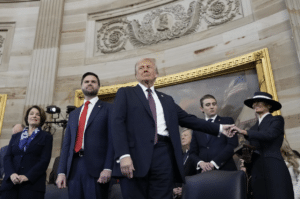“The United States should do whatever it can to assist in the return of normal economic health in the world, without which there can be no political stability and no assured peace. –Secretary of State George C. Marshall1
 A Marshall Plan for Tribal Nations has gained support as tribal leaders and advocates call on the United States to fulfill its longstanding trust and treaty obligations.3 The phrase invokes the European Recovery Program—commonly known as the Marshall Plan—which the United States implemented after World War II to rebuild war-torn Europe. Today, Indigenous leaders are advocating for a similarly ambitious investment to repair the harm caused by centuries of policies that have left tribal nations underfunded and deprioritized.3
A Marshall Plan for Tribal Nations has gained support as tribal leaders and advocates call on the United States to fulfill its longstanding trust and treaty obligations.3 The phrase invokes the European Recovery Program—commonly known as the Marshall Plan—which the United States implemented after World War II to rebuild war-torn Europe. Today, Indigenous leaders are advocating for a similarly ambitious investment to repair the harm caused by centuries of policies that have left tribal nations underfunded and deprioritized.3
The United South and Eastern Tribes Sovereignty Protection Fund (USET SPF) spearheads advocacy for this proposal. This blog post reflects the perspectives and language of the Marshall Plan for Tribal Nations: A Restorative Justice and Domestic Investment Plan published by USET SPF. It provides an overview of the proposed plan and includes discussion questions and further resources to help educators explore this issue with students.
Historical Context: Tribal Nations and the United States
Tribal nations have long been categorized as sovereign political entities, as reaffirmed by the U.S. Constitution,4 treaties, federal statutes, and Supreme Court decisions.5 Despite this legal political status, the United States has continuously failed to fulfill its trust and treaty obligations. This negligence has led to widespread disparities in infrastructure, education, health care, and economic opportunity within tribal communities.
The federal government has acted to terminate, assimilate, and destabilize tribal nations through forced removal, violence, broken treaties, and systematic underfunding. Even in the modern era, federal appropriations for tribal nations have fallen short of what is necessary to meet basic needs.6 This has led to significant gaps in services and infrastructure that are commonplace in other communities.
What Is the Marshall Plan for Tribal Nations?
“What we are talking about is not an ask for handouts. This is about the United States living up to the promises that it made to Tribal Nations—promises that were made in exchange for our land and resources.” –Kitcki Carroll (Cheyenne and Arapaho Tribes of Oklahoma), Executive Director of USET and USET SPF
The Marshall Plan for Tribal Nations is a proposal to rectify the historical injustices and ongoing neglect of trust and treaty obligations through a significant investment that acknowledges and begins to address the United States’ debt to Indigenous peoples. Key components of the plan include:
- A Major Financial Investment: Modeled on the Marshall Plan for Europe, the proposal calls for a large-scale investment in tribal nations to establish a baseline of economic and social stability.
- Creation of a Department of Tribal Nation Relations: This proposed cabinet-level department would oversee the execution of trust and treaty obligations, ensuring funding is allocated effectively and in consultation with tribal leaders.
- Mandatory, Direct Funding: The proposal shifts federal funding for tribal programs from discretionary to mandatory and ensures that funds are allocated directly to tribal governments, rather than through competitive grants.
- Tribal Consultation and Consent: The proposal strengthens tribal nations’ ability to exercise self-governance by requiring federal agencies to obtain direct consent, rather than just consulting with tribal leaders, before implementing policies affecting their communities.
- Infrastructure and Economic Development: Investments in roads, housing, broadband access, health care facilities, schools, and economic opportunities are tailored to the needs of tribal nations.
Comparing the European and Tribal Nations Marshall Plans
The original Marshall Plan allocated approximately 1-2 percent of U.S. gross domestic product (GDP) to rebuild European nations, providing over $13 billion (equivalent to nearly $135 billion today) for a four-year program.7 By contrast, the United States has historically underfunded tribal nations, with appropriations amounting to just 0.07 percent of the value of land taken from Indigenous peoples. If the United States were to invest at a level comparable to the European Marshall Plan, this would translate to hundreds of billions of dollars dedicated to rebuilding tribal nations.
Why This Matters
Understanding the Marshall Plan for Tribal Nations allows students to engage with key civics concepts, including federal treaty obligations and trust responsibilities, tribal sovereignty, and the long-term impacts of federal Indian policy. This allows students to critically analyze how policy decisions shape tribal self-governance and explore restorative justice in U.S.-tribal nation relations.
Discussion Questions
- What were the goals and outcomes of the original Marshall Plan for Europe? How does the Marshall Plan for Tribal Nations compare?
- How has the United States historically failed to fulfill its trust and treaty obligations to tribal nations? What have been the consequences?
- What would a fully funded and properly implemented Marshall Plan for Tribal Nations mean for Indigenous communities?
- What are the potential challenges or criticisms of implementing a Marshall Plan for Tribal Nations?
- How does learning about this issue change your perspective on tribal nation rights and U.S. policy?
Other Resources
- Marshall Plan for Tribal Nations: A Restorative Justice and Domestic Investment Plan, Published by USET SPF
- USET Executive Director Kitcki Carroll’s Marshall Plan for Tribal Nations Presentation at the 2024 NCAI Executive Winter Council Session
- Why Do Treaties Matter? by the Native Governance Center
- What is Tribal Sovereignty? by the Native Governance Center
As always, we encourage you to join the discussion with your comments or questions below.
Close Up is proud to be the nation’s leading nonprofit civic education organization, working with schools and districts across the country since 1971. If you would like to partner with us or learn more about our experiential learning programs, professional development, or curriculum design and consulting, contact us today!
Sources
Featured Image Credit: USET SPF
[1] https://www.marshallfoundation.org/the-marshall-plan/speech
[2] https://www.nihb.org/resource/nihb-resolution-22-09-on-support-for-a-marshall-plan-for-tribal-nations/
[3] https://www.congress.gov/118/meeting/house/116885/documents/HHRG-118-II24-20240320-SD004.pdf
[4] https://constitution.congress.gov/constitution/article-6/
[5] https://narf.org/category/tribal-sovereignty
[6] https://www.gao.gov/products/gao-25-107674#:~:text=Tribal%20applicants%20experience%20systemic%20barriers,to%20help%20alleviate%20these%20barriers.
[7] Marshall Plan (1948). Retrieved October 22, 2024, from National Archives: https://www.archives.gov/milestone-documents/marshall-plan
 On January 20, his first day back in office, President Donald Trump issued an executive order that stops new offshore wind projects from obtaining lease permits, halting development meant to power over 12 million homes.1 At a rally later that day, President Trump characterized wind turbines as ugly and harmful to property values and to the environment.2
On January 20, his first day back in office, President Donald Trump issued an executive order that stops new offshore wind projects from obtaining lease permits, halting development meant to power over 12 million homes.1 At a rally later that day, President Trump characterized wind turbines as ugly and harmful to property values and to the environment.2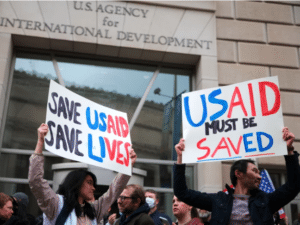 On his first day back in office, President Donald Trump signed an executive order that implemented a 90-day freeze on aid to other countries. Since then, the offices of the U.S. Agency for International Development (USAID) have closed, staff have been furloughed, and there have been more funding freezes. The formerly semi-autonomous agency is now under the leadership of Secretary of State Marco Rubio. Tech billionaire Elon Musk, who leads the new advisory body called the Department of Government Efficiency (DOGE), has targeted USAID and foreign aid when advocating for cutting the federal budget.
On his first day back in office, President Donald Trump signed an executive order that implemented a 90-day freeze on aid to other countries. Since then, the offices of the U.S. Agency for International Development (USAID) have closed, staff have been furloughed, and there have been more funding freezes. The formerly semi-autonomous agency is now under the leadership of Secretary of State Marco Rubio. Tech billionaire Elon Musk, who leads the new advisory body called the Department of Government Efficiency (DOGE), has targeted USAID and foreign aid when advocating for cutting the federal budget. During his first administration, President Donald Trump made tariffs and trade a major part of his economic policy. As he campaigned for another term, he further emphasized how he would use tariffs and trade if reelected. His strategy of issuing tariffs would be used to create more manufacturing jobs for Americans, shrink both the federal deficit and the U.S. trade deficit, and lower food prices.1 During the campaign, then-Vice President Kamala Harris pushed back, saying that Trump’s strategy would have a negative impact on families and their income. She saw, for example, a 20 percent universal tariff by a Trump administration costing families nearly $4,000 per year.2 This debate came at a time when inflation and the cost of consumer goods were among the top issues on voters’ minds.
During his first administration, President Donald Trump made tariffs and trade a major part of his economic policy. As he campaigned for another term, he further emphasized how he would use tariffs and trade if reelected. His strategy of issuing tariffs would be used to create more manufacturing jobs for Americans, shrink both the federal deficit and the U.S. trade deficit, and lower food prices.1 During the campaign, then-Vice President Kamala Harris pushed back, saying that Trump’s strategy would have a negative impact on families and their income. She saw, for example, a 20 percent universal tariff by a Trump administration costing families nearly $4,000 per year.2 This debate came at a time when inflation and the cost of consumer goods were among the top issues on voters’ minds.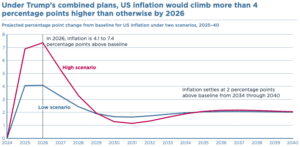
 TOWNSEND — Superintendent Brad Morgan and Principal Laurie Smith are pleased to announce that North Middlesex Regional High School senior Adam Manni has been selected to participate in the Close Up Washington: Johnson & Johnson Scholarship Program.
TOWNSEND — Superintendent Brad Morgan and Principal Laurie Smith are pleased to announce that North Middlesex Regional High School senior Adam Manni has been selected to participate in the Close Up Washington: Johnson & Johnson Scholarship Program.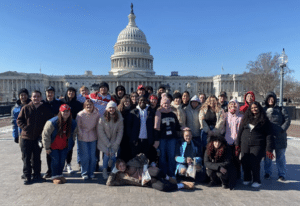 Washington, D.C. was the spot, as 32 students and three teachers from McIntosh High got hands-on for a week of sightseeing and civic engagement workshops through the “Close Up Foundation.”
Washington, D.C. was the spot, as 32 students and three teachers from McIntosh High got hands-on for a week of sightseeing and civic engagement workshops through the “Close Up Foundation.”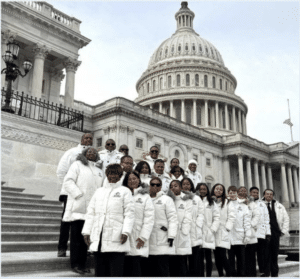 In January 2025, twelve students from Northwest Indiana had the unique opportunity to participate in a weeklong government studies program in Washington D.C. through the ECIER Foundation. This unforgettable trip was part of a partnership with the Close Up Foundation, which is dedicated to providing high school students with an in-depth, hands-on learning experience about the U.S. government. The students, representing several schools in the region, were able to engage with peers from across the country and witness firsthand the workings of American democracy.
In January 2025, twelve students from Northwest Indiana had the unique opportunity to participate in a weeklong government studies program in Washington D.C. through the ECIER Foundation. This unforgettable trip was part of a partnership with the Close Up Foundation, which is dedicated to providing high school students with an in-depth, hands-on learning experience about the U.S. government. The students, representing several schools in the region, were able to engage with peers from across the country and witness firsthand the workings of American democracy.
